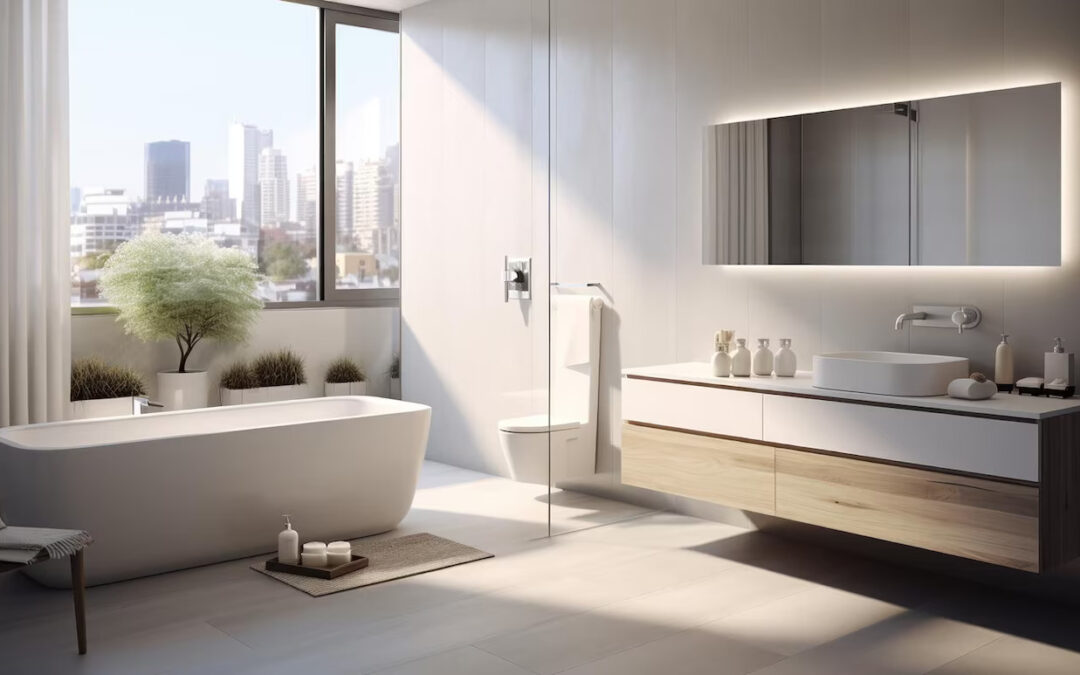It is advisable to start any home remodeling job with a strategy in place. Making decisions becomes easier when you consider your objectives for the project and what you want to add, remove, or enhance. Having a strategy also guarantees that you will remain focused and have the larger picture in mind.
This comprehensive guide to bathroom renovations has been put together to assist you in planning and completing your project in a way that will minimize stress. We’ll start by going over a list of actions you may do to organize your bathroom renovation. After that, we’ll address some common queries, such as how long it could take and how much your home’s worth might increase.
1. Assess Your Needs and Goals
Before diving into a bathroom remodeling project, take the time to assess your needs, preferences, and goals for the space. Deciding on the final design of your bathroom is the first step. There are many of places to explore these days for inspiration on bathroom decor. You can find a tonne of gorgeous images of amazing bathroom ideas on the internet and social media to serve as inspiration for your project. Pinterest is a great place to find and save design inspiration on social media. There are hundreds of bathroom remodels to pick from when you explore. Alternatively, you may scroll around and get a tonne of ideas if you’re searching for a certain feature, such as a vanity. Using online design sites, you may watch your design concepts come to life in the virtual world.
2. Set a Realistic Budget
Establishing a realistic budget is essential for a successful modern bathroom project. You should be able to determine the project’s budget at this point, taking into account the sort of work you’ve selected, the fixtures and finishes you’ve decided on, and whether you’re employing a contractor or doing the work yourself. You can employ a general contractor to offer a quotation for the entire project, or contractors can promptly provide prices for their share of the job. Make sure your budget accounts for the following:
- Expense of materials and supplies (application supplies, adhesives, tools)
- The price of any hired personnel or contractors
- Costs of design and permits
- Cost of missed revenue if you have to miss work
- Fees or charges for inspections
3. Plan Your Layout and Design
The layout and design of your bathroom design play a significant role in its functionality, aesthetics, and overall appeal. The next step is to determine the project’s scope. Is your plan to completely renovate the bathroom or are you content to make minor adjustments like painting and replacing fixtures? The pricing and completion time of your project will depend on how much work you choose to accomplish. The sheer number of fixtures and accessories in a bathroom frequently escapes us.
4. Select High-Quality Materials and Fixtures
Choosing high-quality materials and fixtures is essential for a durable, long-lasting bathroom renovation. Invest in durable, water-resistant materials such as porcelain tile, natural stone, or engineered quartz for flooring, walls, and countertops. Select fixtures and fittings that are not only stylish but also functional and built to withstand daily use. Remodeling a bathroom requires careful consideration of both technical and design aspects. Working closely with professionals who have years of expertise in the industry, may be quite advantageous. Their perspectives assist you in honing your concepts, offering workable answers, and directing you toward decisions that support your objectives.
5. Focus on Lighting and Ventilation
In a bathroom, functionality is key, and having enough storage is essential to that. Make sure your new arrangement has enough room to store towels, toiletries, and other necessities neatly and conveniently, regardless of whether you decide to replace or reface your cabinets. You may create storage options that blend in well with the new decor of your bathroom. Bathroom lighting has a big impact on how a space feels and functions. Talk to experts about your many lighting options as you plan your remodeling project. Making the correct decisions may help you create a well-lit area that both serves its functional purpose and enhances your design, whether it’s ambient lighting or task lighting.
6. Think About Water Efficiency
Consider choosing water-efficient options if your remodeling job includes changing fixtures like shower heads, faucets, and toilets. These fixtures can result in significant long-term cost savings on your utility costs and their environmental advantages. Professionals may offer advice on environmentally responsible solutions that maintain performance and elegance.
7. Time Is Everything
Plan the start and end dates of your remodeling project to minimize interference with your everyday activities. It is advisable to schedule the remodeling during a period that works best for your home, depending on the extent of the job. Maintaining clear lines of contact with the remodeling crew will help expedite the procedure and guarantee that it fits into your timetable.
Get Ready for Anything Unexpected
Remodeling projects often provide unforeseen obstacles, even with the most thorough preparation. Be ready to adjust and have faith in professionals to handle unanticipated situations. Because of their experience, they can handle unforeseen difficulties without sacrificing the integrity and quality of your project. To effectively redesign your bathroom, take into account your demands and work with experts. For homeowners, starting a bathroom renovation project can be both an exciting and intimidating undertaking. Careful planning and execution are necessary for a great end, whether you’re thinking of tub-to-shower conversion, bathtub and shower replacement, or cabinet refacing. These are some priceless pointers to help you work with experts to alter your bathroom seamlessly and satisfactorily.

